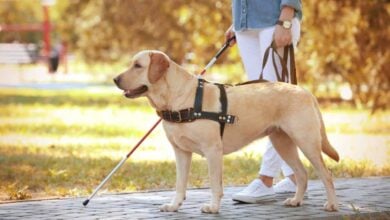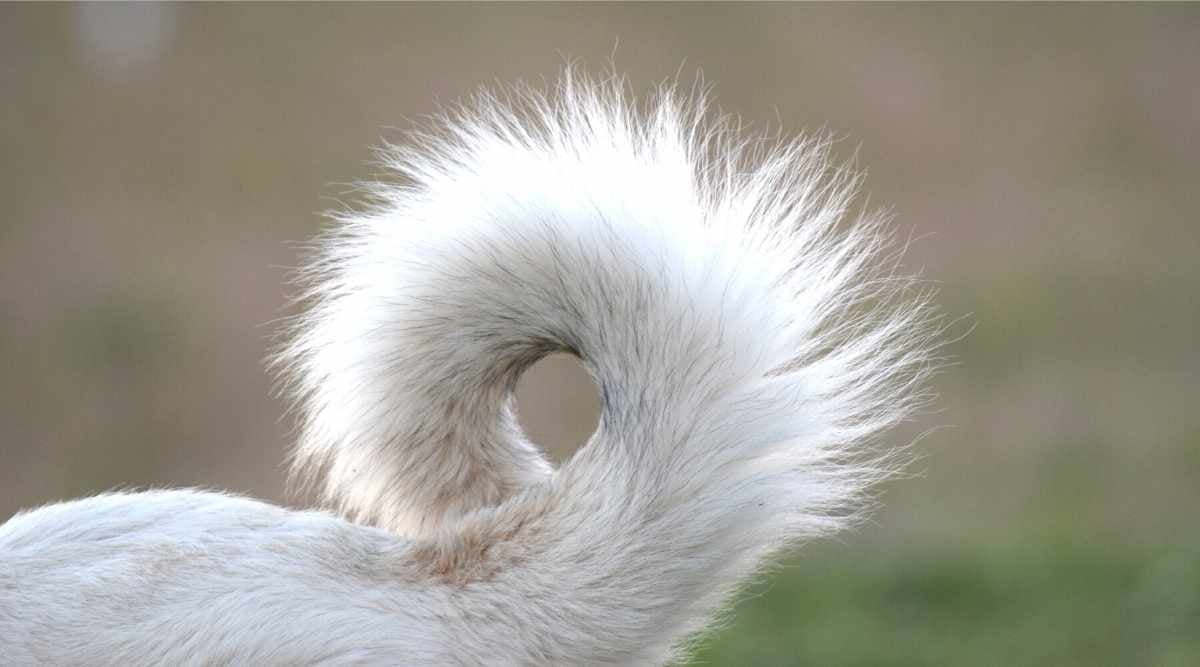Meet The 25 Dog Breeds That Serve, Protect & Save Lives
When you purchase through links on our site, we may earn a commission. Here’s how it works.
Meet the 25 most extraordinary police dog breeds trusted to serve, protect, and rescue when lives are on the line.
Table of Contents
From tracking fugitives through dense forests to detecting explosives in bustling airports, police dogs are indispensable partners in law enforcement. These K-9s aren’t just loyal companions but elite officers with specialized training, instincts, and unwavering courage.

We’ve grouped the types of police dogs by their primary strengths—tactical patrol, scent detection, rescue operations, or offering versatile support in evolving roles.
Inside The K-9 Unit: What You Should Know
Before we dive into the breed breakdown, let’s explore the foundations of the K-9 unit: how widespread these dogs are, how much it costs to train and equip them, and why they’re so effective in scent detection and specialized policing.
How Common Are Police Dogs?
- An estimated 50,000 police dogs are serving across the United States.
- Today, the most common K-9 breeds include German Shepherds, Belgian Malinois, and Dutch Shepherds—all prized for their trainability, drive, and adaptability.
What Does It Cost To Train & Equip A K-9?
- Purchasing and training a fully operational police dog can cost between $20,000–$50,000, depending on the breed, specialty, and healthcare needs.
- Basic acquisition alone may cost around $8,000, especially for dogs imported from Europe.
- According to Project Paw Alive, essential gear includes: bullet & stab-proof vests (~$1,400), military-grade K-9 vests (~$3,800), and K-9 trauma kits (~$350)
Scenting & Detection Superpowers
- A 2020 study of 165 police dogs across four breeds—German Shepherds, Belgian Malinois, Rottweilers, and Labradors— found that Labrador Retrievers had the highest correct alert rates and the lowest number of false alerts in narcotics detection
- A peer-reviewed analysis found no statistical difference in scent accuracy between Belgian Malinois and German Shepherds. Both are top performers in drug detection.
- When testing scent detection in 164 fully-trained police dogs, marijuana was the easiest drug for K-9s to detect, followed by hashish, amphetamines, and cocaine. Heroin was the most difficult.
Top 5 Standout K-9 Breeds
To spotlight the most elite among them, here’s a quick comparison of the five standout police dog breeds most trusted by law enforcement today.
| Breed | Category | Primary Role | Trainability | Detection Skill |
|---|---|---|---|---|
| Beagle | Scent & Detection | Food and contraband detection | Moderate | High |
| Belgian Malinois | Tactical & Patrol | Tactical ops, detection | Very High | Very High |
| Dutch Shepherd | Tactical & Patrol | Riot control, suspect pursuit | High | Moderate |
| German Shepherd | Tactical & Patrol | Patrol, detection | High | High |
| Labrador Retriever | Scent & Detection | Narcotics, explosives, and cadaver detection | High | High |
Tactical & Patrol Dogs
Think of these dogs as the special forces of the K-9 world. Often called “dual-purpose” dogs by police and military handlers, they’re trained to do it all—track suspects, chase down criminals, protect their handler, and sniff out danger in buildings, vehicles, or open areas. These are the bold, brainy, take-command cop dog breeds you’ll most often see working the front lines.
Airedale Terrier: The Jack-of-All-Patrols
The largest of the terrier breeds, the Airedale Terrier is a natural fit for police work thanks to its courage, intelligence, and adaptability. Commonly used by British constables, they are highly regarded for their alertness and working drive.
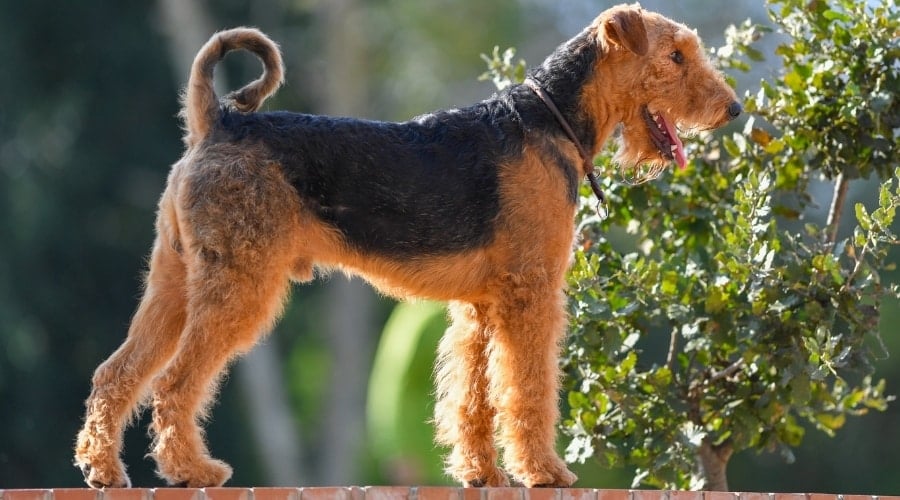
With sharp, well-developed senses originally bred for hunting, Airedales excel at tracking and detection. When needed, they can also be trained to confront or subdue suspects in high-risk scenarios.
- Primary Roles: Scouting, patrolling, border surveillance
- Training Style: Responds well to firm but flexible leadership with challenge-based tasks
- Real-World Impact: Served in WWI carrying messages and delivering supplies through enemy territory
Akita Inu: The Stoic Enforcer
The Akita Inu may look like a fluffy, toasted marshmallow, but this dignified breed is all business on the job. Naturally protective and intensely loyal, Akitas make powerful allies in law enforcement—especially in static guard roles.

They are most commonly used in Japan, where their keen senses and strong territorial instincts are prized. Known for their quiet demeanor, they rarely bark unless they detect a threat and can be trained to respond decisively when danger strikes.
- Primary Roles: Guarding, perimeter security, threat detection
- Training Style: Needs early obedience training with firm, confident handling
- Real-World Impact: Popular in Japanese police and military posts for their low-reaction, high-alert profile
Belgian Malinois: The Special Forces Dog
The Belgian Malinois may resemble a German Shepherd, but they’re lighter, faster, and just as fierce. Their sleek build and intense gaze make them intimidating and agile—key advantages in tactical missions.
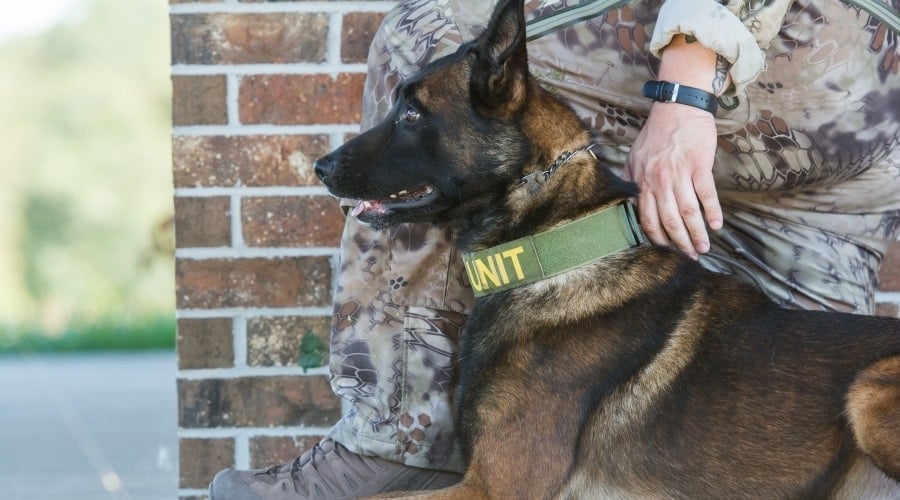
These dogs are known for their unwavering focus, obedience, and versatility. Highly trainable and fiercely loyal, they’ve become indispensable in police and military operations across the globe.
Belgian Malinois have regularly made history for their K-9 heroics:
- Cairo, a member of SEAL Team Six, assisted in the 2011 raid that killed Osama bin Laden
- In 2019, Conan, another Malinois, helped U.S. Special Forces eliminate ISIS leader Abu Bakr al-Baghdadi
- Bass, a Belgian Malinois with the US Marine Special Operation Command, was awarded the prestigious PDSA Dickin Medal for his bravery in Afghanistan. He safely located explosives and protected troops during a Taliban ambush.
Their fearlessness and precision cement the breed’s reputation in special operations.
- Primary Roles: Tactical operations, military missions, narcotics and explosives detection
- Training Style: Reward-based but demanding. They need constant challenges to stay engaged.
- Real-World Impact: Increasingly used in Europe for high-threat patrols and prison security
Field Heroics: In 2023, a 4-year-old Malinois named Yoda helped capture an escaped murderer in Pennsylvania after locating and subduing the suspect.
Cane Corso: The Roman Powerhouse
Descended from Roman war dogs, the Cane Corso is bred for both brute strength and sharp awareness. Their natural instincts for guarding and controlling space make them exceptional for patrols, suspect apprehension, and perimeter defense.
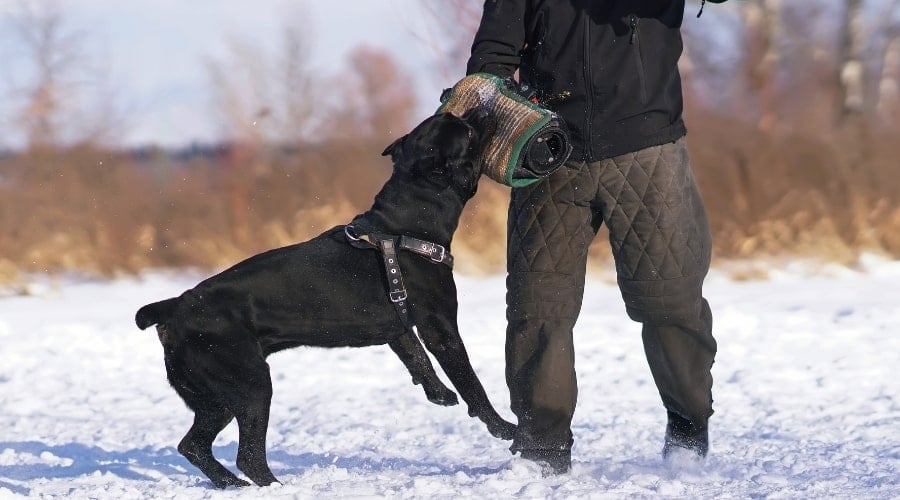
Despite their imposing stature, Cane Corsos are highly obedient and eager to work. Their athleticism and intimidating presence allow them to chase down suspects, guard sensitive areas, and maintain control in high-risk environments.
- Primary Roles: Guard duty, patrol, suspect apprehension
- Training Style: Needs firm structure and early socialization
- Real-World Impact: Increasingly used in Europe for high-threat patrols and prison security
Doberman Pinscher: The Sleek Sentinel
The Doberman Pinscher has earned a reputation as a fast, alert, commanding guard dog. Ranked among the top five most intelligent breeds, their blend of loyalty and focus makes them a natural fit for law enforcement.

These dogs thrive in high-security roles thanks to their speed, strength, and capacity for protection and pursuit. Though less common in today’s forces due to cost, they remain a top choice for elite security teams worldwide.
- Primary Roles: Patrol, suspect pursuit, high-security guarding
- Training Style: Structured programs with trust-based reinforcement
- Real-World Impact: Frequently used by private security forces and VIP protection teams for their deterrent effect
Dutch Shepherd: The Endurance Expert
The Dutch Shepherd hails from the Netherlands and brings a work ethic as strong as its bite. Often mistaken for a brindle-coated German Shepherd, this breed was developed for herding and quickly proved itself in law enforcement for its versatility and relentless drive.
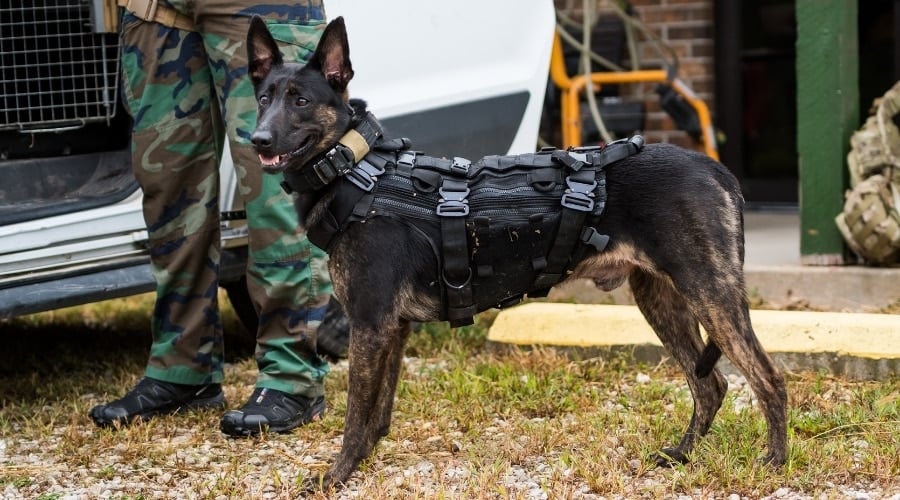
They excel in guarding, tracking, and defense roles, especially where endurance is key. With proper training, Dutch Shepherds make determined, obedient, and courageous partners who can handle anything from riot control to rural patrol.
- Primary Roles: Patrol, search, suspect apprehension
- Training Style: Consistency is key—they’re incredibly responsive once bonded
- Real-World Impact: Widely used in Dutch law enforcement for riot control and suspect pursuit
German Shepherd: The Gold Standard Of K-9 Units
Powerful, poised, and endlessly trainable, the German Shepherd is the cornerstone of global law enforcement. Their loyalty is legendary, and their intelligence—ranked third among all dog breeds—makes them the first pick for high-pressure, high-stakes assignments.
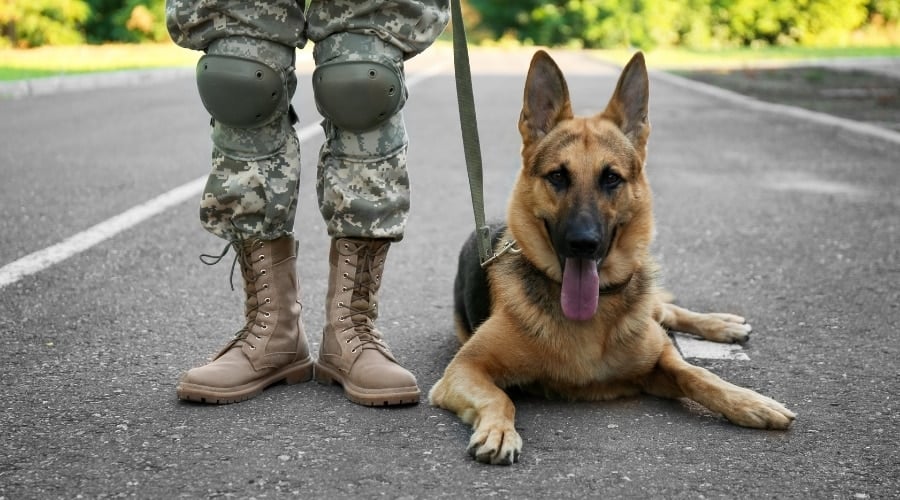
German Shepherds have earned their place in law enforcement history through countless real-world missions, including:
- Cloud II: A legendary Canadian K-9 who helped capture 123 fugitives during his four-year career. His unmatched service earned him a place in the Purina Animal Hall of Fame.
- Apollo: A member of the NYPD, Apollo was one of the first dogs trained in search and rescue. He worked the 9/11 Ground Zero site and nearly lost his life in falling debris. For his service, he was awarded the Dickin Medal, the animal equivalent of the Victoria Cross.
- Koton: A film star and K-9 with Kansas City PD, once discovered $1.2 million in cocaine and was responsible for over 24 felony arrests.
Built for speed and strength, they handle everything from suspect apprehension to explosives detection. Their muscular build, quick reflexes, and sharp instincts allow them to excel in diverse K-9 roles worldwide.
- Primary Roles: Patrol, apprehension, explosives and narcotics detection, and protection
- Training Style: German Shepherds respond quickly to structured, command-based programs. They’re ideal for handlers who want a responsive and confident partner
- Real-World Impact: The German Shepherd is the most popular dog employed by police agencies across the U.S.
Day-One Success: Maverick, a German Shepherd–Malinois mix, helped seize 30+ lbs of drugs and $35,000 in cash on his very first day with Minnesota PD.
Scent & Detection Experts
These dogs have one job—and they do it exceptionally well. Detection experts are trained to sniff out everything from narcotics and explosives to cadavers and illegal contraband. With powerful noses and relentless focus, they help uncover what the human eye can’t see, often serving in airports, border patrol, and crime scenes.
Basset Hound: The Low-Slung Tracker
The Basset Hound’s squat frame might seem unassuming, but their scenting ability is elite. French law enforcement often use them as experts at ground-level scent tracking—especially in crime scene investigations and cadaver recovery.
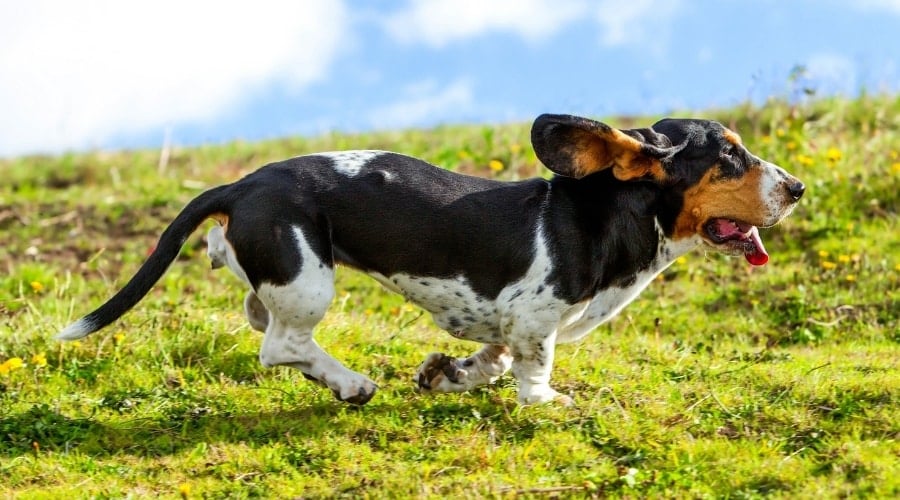
Though not as energetic as their hound cousins, their calm and steady temperament makes them ideal for slow, methodical search work. Their exceptional noses and low center of gravity help them focus on a trail with unmatched precision.
- Primary Roles: Scent tracking, cadaver detection, rural evidence location
- Training Style: Positive reinforcement with slow-build endurance training
- Real-World Impact: Regularly employed in French police forensic team
Beagle: The Small Sniffer With A Big Legacy
Beagles may be small, but their scenting ability rivals even the Bloodhound. Initially bred for hunting, they’re experts at following a scent trail with unrelenting focus—even if their independent streak can occasionally distract them.
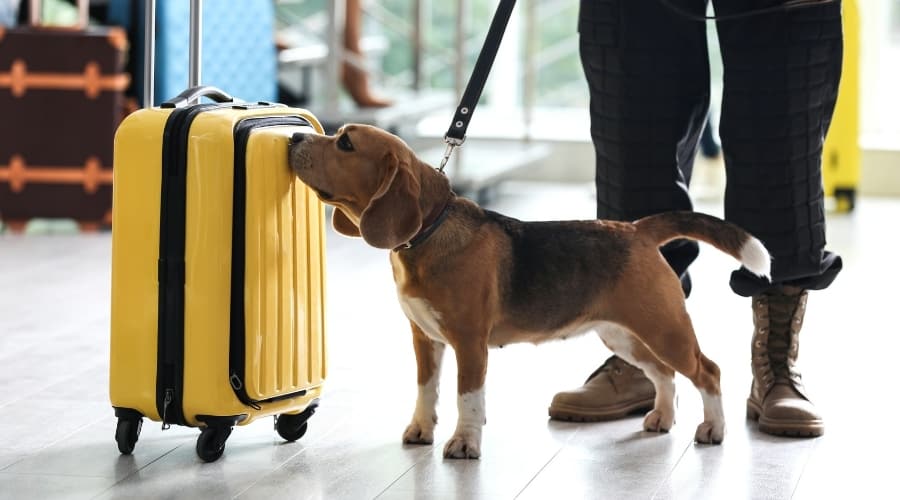
Their size, friendly nature, and superb noses make them perfect for public-facing customs and airport security roles. They’re particularly valued for detecting food, contraband, and even cadavers.
- Primary Roles: Contraband detection, customs inspections, cadaver detection
- Training Style: Positive reinforcement with scent-based rewards; needs structured redirection to maintain focus
- Real-World Impact: Beagles play a lead role in the USDA’s “Beagle Brigade,” intercepting illegal agricultural imports at airports across the U.S.
Bloodhound: A Nose Like No Other
The Bloodhound’s scent-tracking abilities are legendary, with more scent receptors than any other breed. First used in police work by the British to hunt Jack the Ripper, they’ve set the gold standard for tracking across generations.

These dogs can follow trails days old over dozens of miles, even through crowded or contaminated environments. Though not as commonly seen today, their legacy lives on in every K-9 scent unit.
- Primary Roles: Long-distance tracking, cadaver detection, wilderness search-and-rescue
- Training Style: Reward-based trailing with gradual distance increases
- Real-World Impact: Bloodhound scent trails are so reliable, they’re admissible as evidence in court. Their nose doesn’t lie—and neither do the rulings.
Historic Firsts: The event that skyrocketed the popularity of police dogs was the 1888 Jack the Ripper case. Two Bloodhounds, Barnaby and Burgh, were enlisted by Scotland Yard to track the infamous killer’s scent. Although they didn’t solve the case, their involvement sparked widespread interest in K-9 policing across Europe.
English Cocker Spaniel: The Compact Contraband Catcher
Don’t be fooled by their charm—English Cocker Spaniels are scent-detection dynamos wrapped in silky coats. Initially bred for flushing game, their speed and agility make them well-suited for airport, border, and customs work.

Their compact size lets them navigate tight spaces without alarming the public, while their high intelligence means they pick up scent training quickly and precisely.
- Primary Roles: Explosives and narcotics detection, customs and airport inspections
- Training Style: Clicker training with scent identification drills; high food drive helps reinforcement
- Real-World Impact: Ranked in the top five for scent accuracy in a 2023 U.K. Home Office study
Labrador Retriever: The Narcotics Sniffer
Labrador Retrievers may be America’s most beloved family dog, but they’re also elite K-9 operatives. Their intelligence, gentle nature, and keen sense of smell make them invaluable for public-facing law enforcement work.
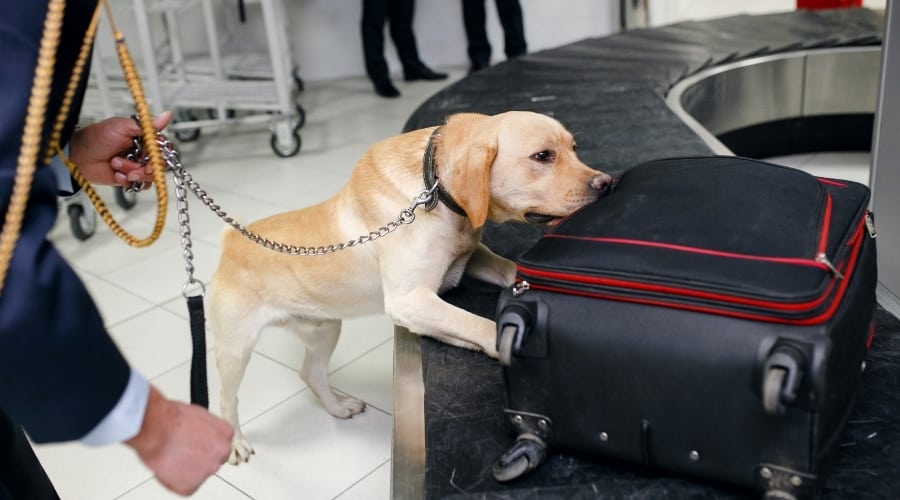
They’re especially effective in narcotics and explosives detection, and their background as water retrievers makes them natural fits for aquatic rescues. Labs excel in environments that require both high performance and public trust.
- Primary Roles: Explosives and narcotics detection, search-and-rescue, cadaver detection
- Training Style: High food and play drive—responds well to reward-based programs
- Real-World Impact: Labradors are experts in narcotics detection, especially in vehicle searches
Pioneering Pup: In the 1980s, a black Lab named Mattie became America’s first accelerant detection dog, helping launch a nationwide arson investigation program.
English Springer Spaniel: The Agile Investigator
Springer Spaniels are small but mighty detection dogs with an energetic edge. Bred for flushing and retrieving game, they bring that same drive and focus to sniffing illegal substances and locating evidence.

Their speed, agility, and relentless work ethic are ideal for active law enforcement environments like airports or narcotics units. They’re especially effective where rapid, precise detection is needed.
- Primary Roles: Explosives and narcotics detection, urban search and evidence recovery
- Training Style: Energetic, reward-based training with scent drills and task repetition
- Real-World Impact: Commonly employed in international airport security due to size and efficiency
Explosive Detection Experts: Buster, a Springer Spaniel with the Royal Army Veterinary Corps, served five tours in Afghanistan, Bosnia, and Iraq. He located a hidden cache of weapons and explosives in Iraq, saving thousands of lives.
Search & Rescue Specialists
These dogs shine when disaster strikes. Whether they’re pulling survivors from the rubble, tracking a missing hiker through the woods, or braving floodwaters to find someone in need, their instincts and stamina save lives. With a rare mix of endurance, emotional intelligence, and trainability, these police dog breeds are trusted partners in high-stakes recovery efforts where time and precision make all the difference.
Australian Shepherd: The Herding Hero
Don’t let the name fool you—this all-American breed was made for motion and mission. Originally bred for herding, Australian Shepherds bring the same instincts and stamina to modern rescue work.
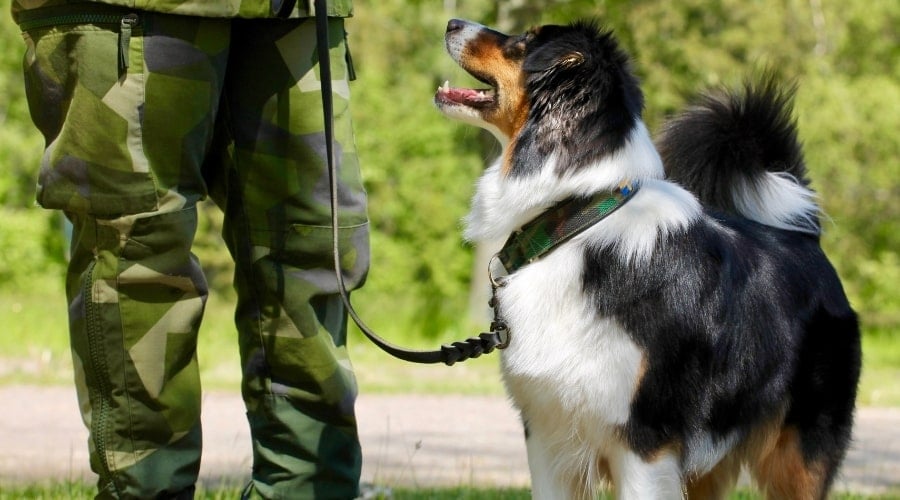
Their intelligence, agility, and high energy make them ideal for search-and-rescue in rough terrain or disaster zones. While not aggressive, their focus and determination allow them to remain calm and effective in high-pressure situations.
- Primary Roles: Search-and-rescue, evidence recovery, water retrieval
- Training Style: Reward-driven with a focus on movement-based tasks
- Real-World Impact: Frequently used by rural emergency teams for rugged terrain rescues
Boxer: The Playful Warrior
Boxers may be known for their playful nature at home, but they’re courageous and commanding in uniform. Initially bred for bull-baiting and repurposed for war zones, Boxers delivered messages and first aid supplies across World War battlefields.
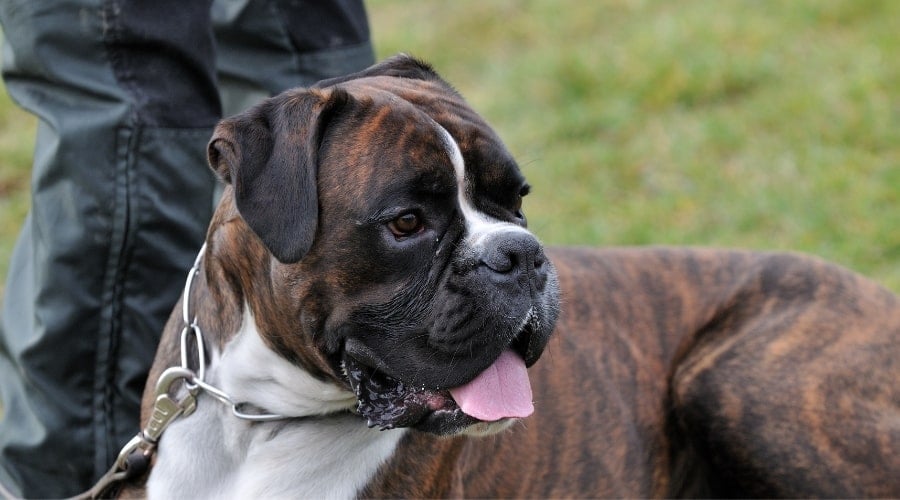
Their athleticism, loyalty, and quick learning make them solid rescue and recovery dogs in urban environments and chaotic terrain. They intimidate when necessary but are also capable of great precision and speed.
- Primary Roles: Messenger duties, explosive detection, search-and-rescue
- Training Style: Game-based learning with firm repetition
- Real-World Impact: Served on WWII battlefields delivering supplies and locating wounded soldiers
Briard: The Shaggy Sentinel
The Briard is a rugged, loyal French herding breed with battlefield credentials. Known for their bravery in WWI, they were often tasked with locating and aiding wounded soldiers under fire.
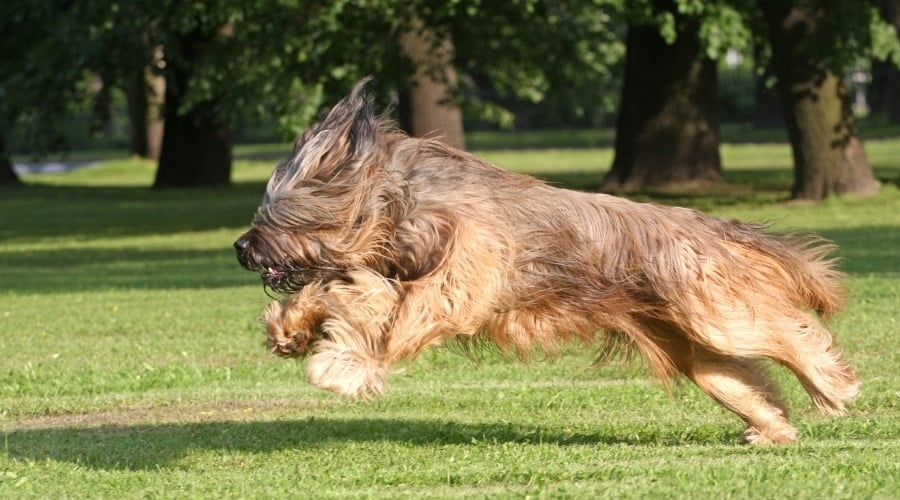
Their protective instincts and emotional intelligence make them valuable in chaotic, high-stress environments. Briards are excellent at search-and-rescue operations and are quick to alert their teams of unseen threats.
- Primary Roles: Search-and-rescue, disaster zone navigation, emotional support during crises
- Training Style: Needs clear leadership and early obedience routines
- Real-World Impact: Used during WWI to locate and assist wounded soldiers under fire
Golden Retriever: The Gentle Rescuer
Golden Retrievers might be best known for their sweet temperaments, but their intelligence and determination make them stand out in police work—especially in non-aggressive roles. Their ability to navigate emotionally intense environments makes them ideal for trauma response and search-and-rescue missions.
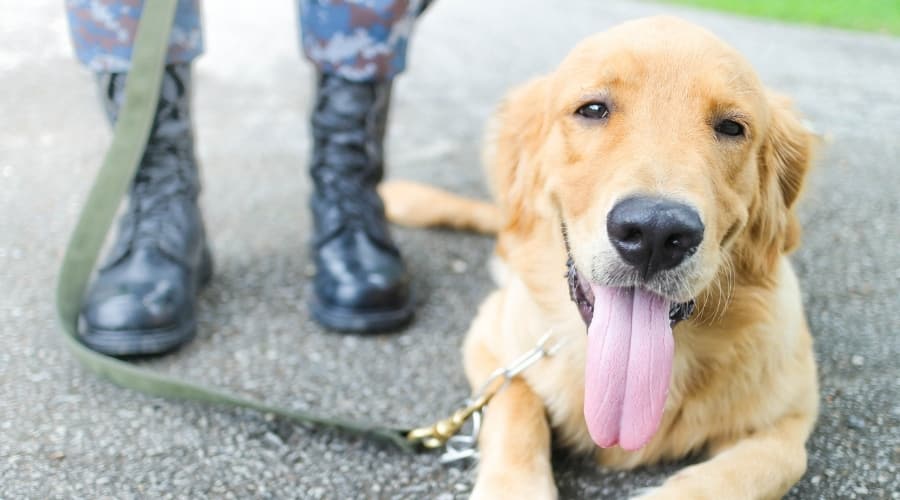
They’re especially valuable in water recovery, thanks to their retriever lineage. Calm under pressure and eager to please, Goldens thrive in roles where compassion and stamina are essential.
- Primary Roles: Search-and-rescue, aquatic recovery, emotional trauma support
- Training Style: Positive reinforcement with high repetition
- Real-World Impact: Regularly deployed in natural disaster recovery missions around the world
Hero Highlight: Bretagne, a Golden Retriever, was the longest-serving 9/11 rescue dog, aiding search teams after the attacks and during Hurricane Rita.
Rottweiler: The Relentless Guardian
The Rottweiler is a muscular, highly intelligent breed with a rich legacy of service. These dogs served as messengers in both World Wars, navigating war zones with speed and determination.

Rotties are versatile, holding roles in apprehension, guarding, and search-and-rescue. Their loyalty and power continue to earn them a spot in elite K-9 units worldwide.
- Primary Roles: Personal protection, messenger work, search-and-rescue
- Training Style: Strong pack bonding with consistent, assertive command structure
- Real-World Impact: Rottweilers have been involved in search, rescue, and recovery efforts during some of the world’s most significant disasters, including 9/11, Hurricane Katrina, and the earthquake in Haiti.
Specialized & Underused Talents
These breeds bring intelligence, agility, and untapped potential to the force. While not as commonly used as police dog breeds, they are often exceptional in specialized roles such as perimeter patrol, rural detection, or border security. Their flexibility and focus make them valuable additions to evolving law enforcement strategies.
American Pit Bull Terrier: The Muscle With A Mission
The American Pit Bull Terrier has a long and often misunderstood history, but they shine in service when trained well. Known for their strength, speed, and deep loyalty, Pit Bulls are making a comeback in law enforcement and search-and-rescue circles.
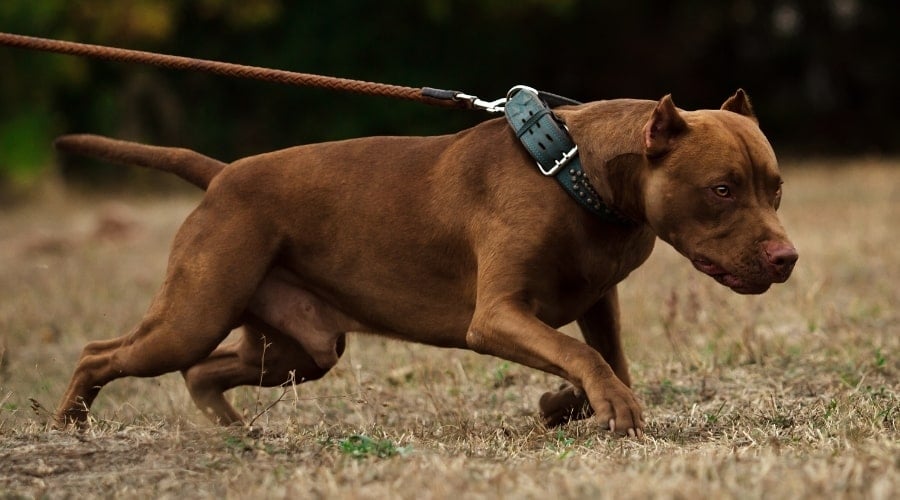
Though often mischaracterized, these dogs form strong bonds with handlers and are incredibly responsive to structured, purpose-driven training. Their affectionate nature makes them valuable in the field and as emotional anchors at the station.
- Primary Roles: Apprehension, search-and-rescue, station companionship
- Training Style: Excels with consistent structure and handler trust
- Real-World Impact: Served in WWII and are now increasingly used in U.S. shelters as retrained K-9 partners for community and narcotics work
Belgian Tervuren: The Shadow Operator
The Belgian Tervuren is a striking and underrated breed in the police dog world. Their wolf-like appearance can stop a suspect in their tracks, but their intelligence and courage make them true assets in the field.
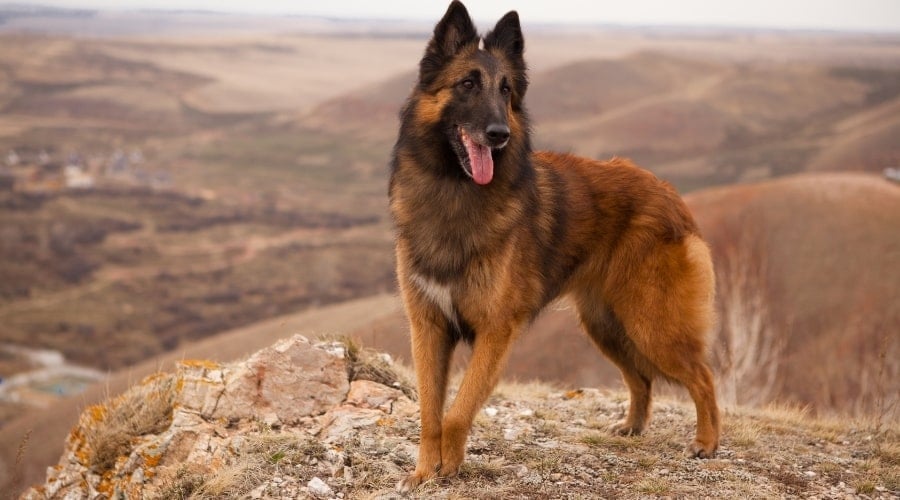
Used effectively in both detection and tactical patrol, Tervurens are intensely loyal, handler-focused, and brave in high-risk situations. Their exceptional noses make them ideal for contraband searches, and they excel in covert and emotionally demanding missions.
- Primary Roles: Detection, stealth patrol, criminal deterrence
- Training Style: Bond-based training with task variety to match their high intelligence
- Real-World Impact: Increasingly employed in European law enforcement for dual-purpose detection and patrol work due to their adaptability and alertness
Border Collie: The Brainiac On Patrol
With their unmatched intelligence, sharp reflexes, and agile frame, the Border Collie is a brilliant but underutilized asset in law enforcement. Originally bred to herd livestock with strategic precision, these dogs excel at roles requiring focus, decision-making, and speed.
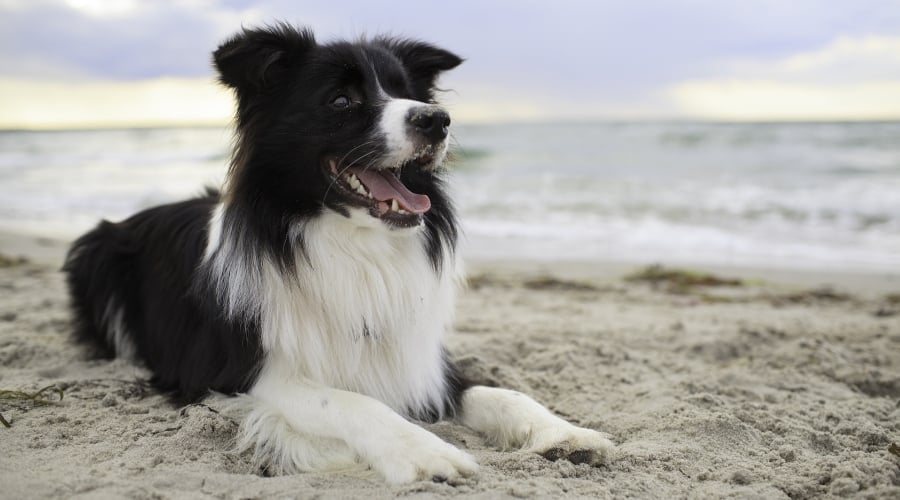
Though not widely used in traditional K-9 units, their ability to detect irregularities and execute complex commands makes them ideal for perimeter patrol, evidence detection, and advanced task training.
- Primary Roles: Evidence detection, perimeter patrol, complex task execution
- Training Style: Requires constant mental stimulation and positive reinforcement
- Real-World Impact: Capable of learning over 1,000 commands—ideal for specialty K-9 applications
Bouvier des Flandres: The Bearded Defender
The Bouvier des Flandres is a sturdy Belgian breed with deep military roots. These dogs served in both World Wars, pulling ambulance stretchers and delivering supplies across active battlefields.
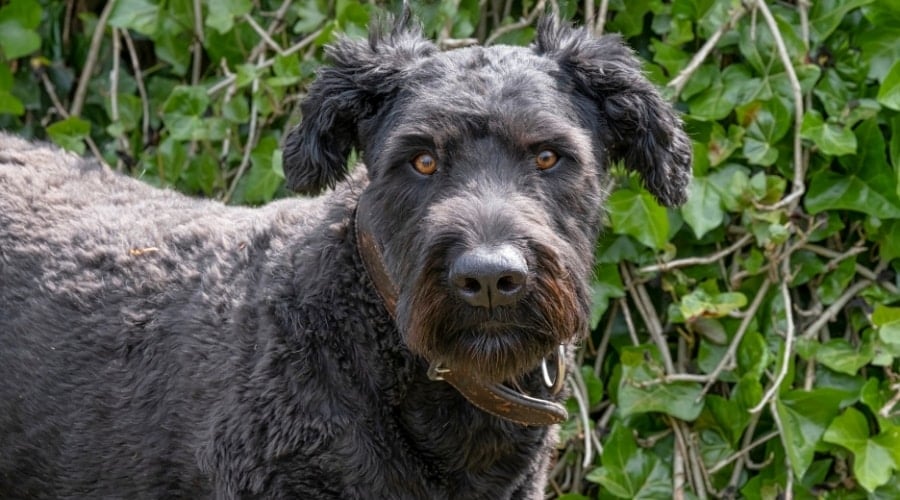
Their large, imposing frame and strong protective instincts make them natural defenders in high-threat environments. Despite their shaggy appearance, they are intensely loyal, fearless, and quick to act when danger arises.
- Primary Roles: Guarding, patrolling, threat response
- Training Style: Benefits from assertive leadership and scenario-based exposure
- Real-World Impact: Used in WWI to transport the wounded and guard military supply lines
German Shorthaired Pointer: The Tireless Scout
The German Shorthaired Pointer is a high-energy, all-terrain tracker with natural athleticism and drive. Initially bred for hunting, their speed and stamina make them excellent for open-field or large-area police work.
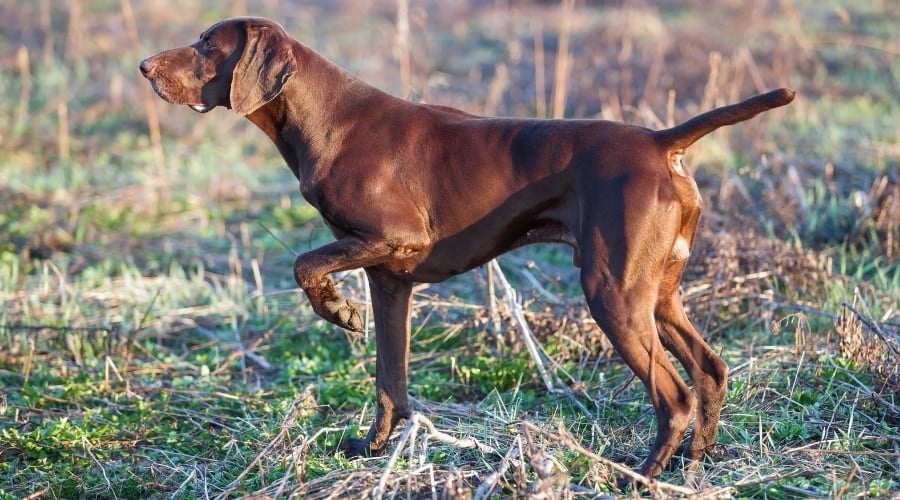
Though not suited for aggressive confrontation, they excel in tracking illegal substances, lost persons, or forensic evidence. Their balance of obedience and independence makes them a valuable tool for detection teams operating in diverse environments.
- Primary Roles: Tracking, scent detection, evidence retrieval
- Training Style: Obedience-focused with game-reward systems and movement-based drills
- Real-World Impact: Preferred by rural search units for wide-area and wooded environment detection missions
Giant Schnauzer: The Towering Sentinel
Giant Schnauzers are bold, intelligent, and built to command attention. While not naturally aggressive, their sheer size and presence make them a formidable deterrent in any security setting.
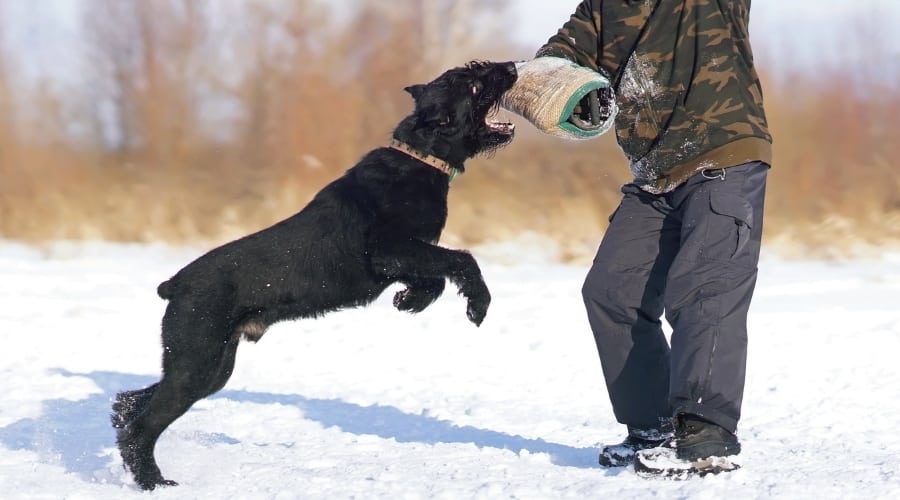
Thanks to their keen sense of smell and trainability, they excel in detection work and perimeter patrol. These dogs thrive when given mentally stimulating tasks and a clear working structure.
- Primary Roles: Detection, patrol, perimeter security
- Training Style: Highly responsive to structured obedience and challenge-based problem-solving
- Real-World Impact: Regularly deployed in military and airport security roles, including by the U.S. Air Force
Rajapalayam Dog: India’s Border Sentinel
The Rajapalayam is a regal and powerful sighthound, best known for its work along India’s border regions. Once bred to hunt wild boar, this rare native breed has transitioned into a trusted police and military dog.

They are especially valued for their sharp vision and territorial instincts, which make them well-suited for border surveillance and perimeter security. Though they tend to be reserved with strangers, their loyalty to handlers is unwavering.
- Primary Roles: Border patrol, fixed-site surveillance, intruder detection
- Training Style: Visual cue training with strong early bonding
- Real-World Impact: Actively deployed along the Kashmir border to track movements and deter intrusions
Frequently Asked Questions
Are you curious about how police dog breeds are selected and trained, or what makes one breed more suited than another? You’re not alone.
Here are the most searched—and most important—questions people ask about K-9 units. Don’t see yours? Ask us in the comments!
What Breed Of Police Dog Is Most Commonly Used?
The German Shepherd remains the most commonly deployed police dog worldwide due to its intelligence, adaptability, and physical strength. Belgian Malinois are also gaining popularity, especially for elite tactical units.
How Are Police Dogs Trained?
Police dogs begin training as early as 8–12 weeks old, with programs focusing on obedience, scent detection, bite control, and handler bonding. Trainers tailor each program to the dog’s specific role—narcotics detection, apprehension, or rescue work.
How Long Does It Take To Fully Train A Police Dog?
Basic obedience can take a few months, but full operational readiness may take 8 to 12 months depending on the role. Tactical dogs or dual-purpose K-9s can take over a year of intensive work with ongoing training throughout their career.
Do Police Dogs Have Legal Protections?
Yes. In many countries, including the U.S., harming a police dog is a felony offense. These K-9s are considered sworn officers and are protected by laws similar to those covering human law enforcement personnel.
Can Any Dog Become A Police Dog?
Not quite. While mixed breeds can sometimes qualify, most police dogs come from bloodlines bred for working traits such as obedience, focus, strength, and resilience under pressure.
What Happens When A Police Dog Retires?
Most K-9s retire around 8–10 years of age. In many cases, handlers or their families adopt the dogs, while others find homes with people experienced in caring for working breeds.
Can Civilians Adopt A Retired Police Dog?
Sometimes. While most retired K-9s are adopted by their handlers, others may be available for civilian adoption through law enforcement agencies or nonprofit organizations. These dogs often need experienced, structured homes.
What’s The Difference Between A Military Working Dog And A Police Dog?
Military handlers train dogs to support combat missions and operate in battlefield conditions. Police departments train dogs to handle civil enforcement tasks like detection, apprehension, and search-and-rescue.
Looking For More Loyal Legends?
Whether you’re fascinated by the versatility of police dog breeds or considering a protective companion of your own, the world of service breeds runs deeper than police K-9s. Don’t miss our features on the best working dog breeds, top guard dogs, and the most expensive dogs in the world—including a $150,000 personal protection dog.

